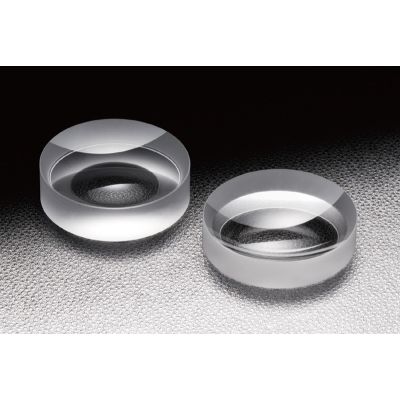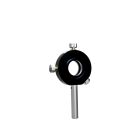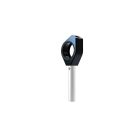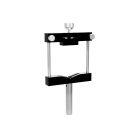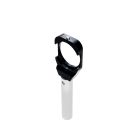Biconcave Lens Synthetic Fused Silica 30mm Diameter −99.7mm Focal Length
SLSQ-30B-100N
These biconcave lenses are used when a very high negative power is required. They can be used in a multi-element system or alone to produce a diverging cone or virtual image. Sharpe edges, which are common in negative lenses, are removed by beveling to reduce the likelihood of chipping.
◦There are two types of biconvex lenses available; synthetic fused silica for wavelengths less than 350nm ultraviolet light.
◦Consult our Sales Division for anti-reflection coatings suitable for your application.
◦Our lenses are listed by outside diameter and focal length to assist your selection according to required specifications.
◦Consult our Sales Division for anti-reflection coatings suitable for your application.
◦Our lenses are listed by outside diameter and focal length to assist your selection according to required specifications.
| Name | Biconcave Lens Synthetic Fused Silica 30mm Diameter −99.7mm Focal Length |
|---|---|
| Weight | 0.0500kgs |
| Standard Coatings Available | Yes |
| Guide |
|
| Remark | - |
| Attention |
|
| Diameter φD | 30mm |
| Focal length | −99.7mm |
| Material | Synthetic fused silica |
| Design Wavelength | 546.1nm |
| Refractive index n<sub>e</sub> | 1.46 |
| Coating | Uncoated |
| Clear aperture | 90% of the diameter |
| Surface Quality (Scratch-Dig) | 20-10 |
| Diameter φD | φ30mm |
| Focal length f | −99.7mm |
| Edge thickness te | 4.5mm |
| Center thickness tc | 2mm |
| Back focal length fb | −100.3mm |
| Radius of curvature r | 92mm |
| Centration | <1′ |
In stock
SKU
SLSQ-30B-100N
$171.00
These biconcave lenses are used when a very high negative power is required. They can be used in a multi-element system or alone to produce a diverging cone or virtual image. Sharpe edges, which are common in negative lenses, are removed by beveling to reduce the likelihood of chipping.


